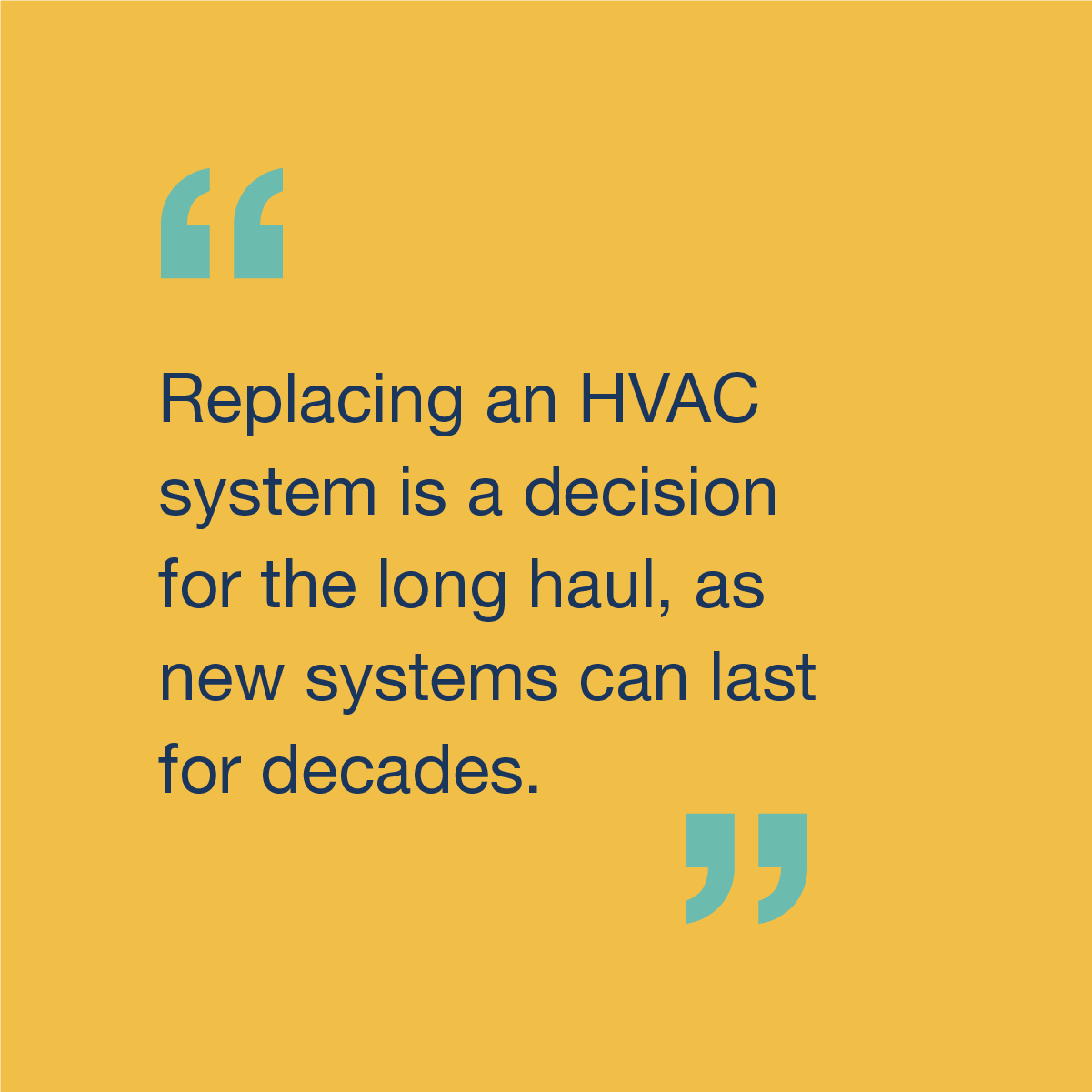How to Save Money with Your HVAC System
March 9, 2023
Whether you’re installing a new HVAC system or maintaining your current one, here’s how to save money with your HVAC system.


Your HVAC system serves to not only improve home comfort, but when it works efficiently, it can also help cut down on costs.
From EcoNet® to high-efficiency heat pumps and air conditioners, installing new Rheem equipment can bring cost savings. If you’re not in the market for a new system, the good news is that you can work with your current system to stretch your dollars and do the same.
Here’s how to save money with your HVAC system.
Installing High-Efficiency Systems That Work for Your Wallet
If you’re looking to upgrade your current HVAC system, Rheem’s portfolio of high-efficiency air conditioners and heat pumps unlock high energy savings and lower utility bills.
Not sure which solution is right for you?
Although both heat pumps and air conditioners can effectively cool your home, only heat pumps can provide warmth during colder weather. That’s because heat pumps can run in reverse and efficiently draw heat from the air outside, even if temperatures are lower outside, and pump it inside to create a warm, comfortable home. This means that if you live in an area that experiences chilly temperatures, a heat pump might be a better option for you.
However, if where you live experiences frigid temperatures, typically below 40 degrees in standard systems or 17 degrees in Rheem’s most efficient models, a heat pump’s efficiency begins to drop, so a secondary heat source may be used as a backup when temperatures dip.
Meanwhile, air conditioners cannot create heat, which means they only act in cooling mode. If you live in a warmer climate and are just looking for a way to cool your home year-round, an air conditioner is a great choice.
If your home does require heat and you have an AC unit installed, you will need another heat source, such as a furnace. Furnaces do release greenhouse gases, making them less environmentally friendly than heat pumps. Although heat pumps deliver savings and sustainability when its chilly, when it’s cold, furnaces may heat your home more effectively.
Although high-efficiency, sustainable HVAC solutions can be an investment, keep in mind that that they can come with added cost benefits besides lower utility bills. Because of the Inflation Reduction Act, installing a high-efficiency unit can also come with additional tax credits and rebates.
Remember, replacing an HVAC system is a decision for the long haul, as new systems can last for decades. Take the time to make the best educated decision for your home so you can maximize savings and improve your indoor climate.

How to Save with Your Current HVAC System
If you’re not in the market for a new HVAC system, that doesn’t mean you can’t cut down on costs. Making your system work for your home and your wallet comes down to ensuring that your system is working at its best throughout the years.
Here are a few things you can do to reduce costs with your current system:
1. Get smart about your thermostat.
Monitor and control your home temperature settings to work best for you, whether you’re home or away. Solutions such as EcoNet® mean that you can easily adjust the temperature from wherever you are. Plus, EcoNet®’s geofencing technology to know when you are or aren’t home and heats or cools the house accordingly to maximize energy savings.
2. Weatherize your home.
How your home operates has a big impact on the performance of your HVAC system. And when your home works efficiently, so does your HVAC system. Weatherizing your home can not only increase your home’s efficiency, but it also improves comfort and lowers your energy bills.
So, what does weatherization look like? Seal all windows and doors, as well as attics and basements, to prevent heat loss. If you have an older duct system, consider sealing that as well to prevent conditioned air from leaking into unconditioned spaces and running your HVAC system longer than needed. If you live in a hot or warmer climate, install blinds or solar shades to keep the sun’s heat from entering your home and increasing the need for air conditioning.


3. Manage your home’s humidity.
Controlling home humidity can also help keep home at maximum comfort and costs down. In the winter, adding humidity into your home can not only ensure that the house isn’t dry but also helps us feel more comfortable at a lower temperature. During the summer, keeping humidity at a lower level can help us feel comfortable at a higher indoor temperature. In both cases, controlling home humidity reduces the amount of time your HVAC system has to run to maintain comfort.
4. Clean and change your air filters regularly.
Studies suggest that keeping air filters clean can lower an air conditioner’s energy consumption by 5% to 15%. If your home doesn’t seem to be heating or cooling as well, check your air filters first. Most systems require new filters every six months to a year.
5. Stay up to date with regular maintenance checks.
Regular service checks ensure that your system is functioning at its best and most efficient while helping to prevent major issues that can not only compromise efficiency but also the health of the whole HVAC system. Maintenance checks are typically recommended at least twice a year ahead of major heating and cooling seasons in the summer and winter.
Looking for an energy-efficient HVAC system and not sure where to start? Check out Rheem’s Sustainability Standouts to see the full line of efficient solutions that can better your home and budget.







